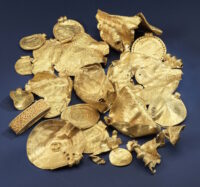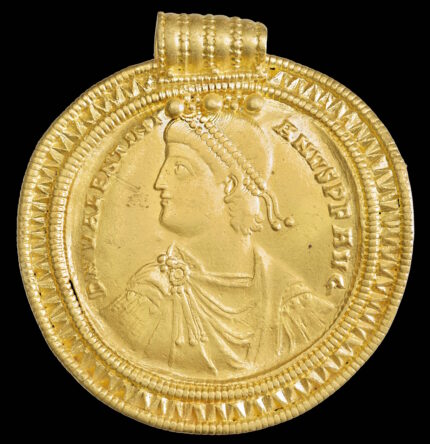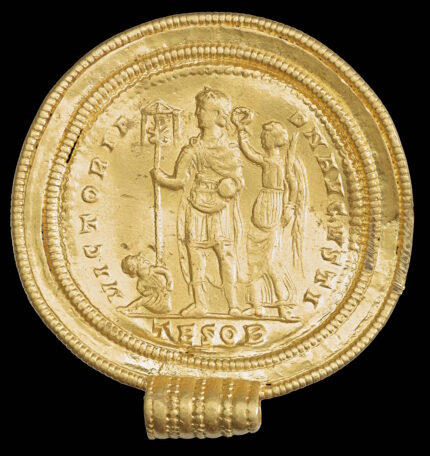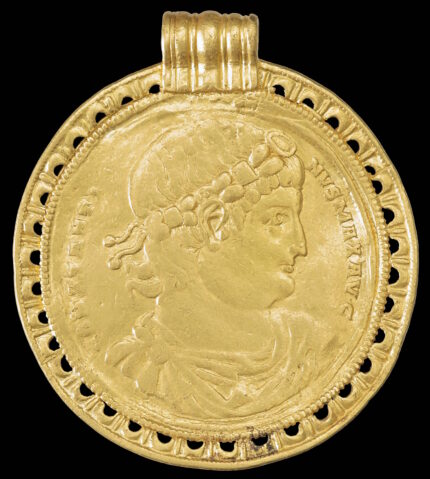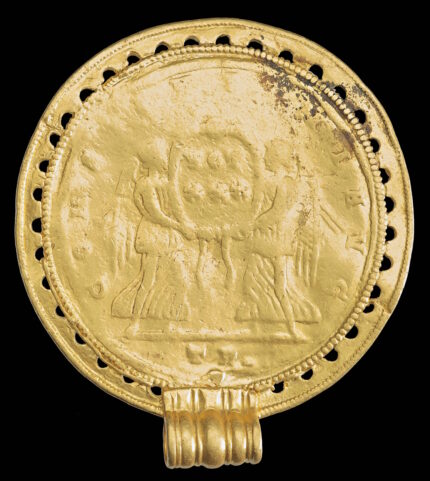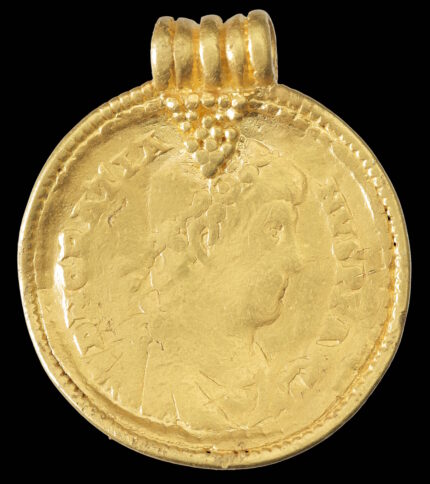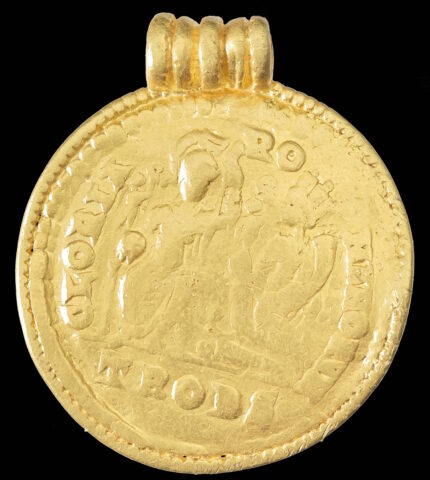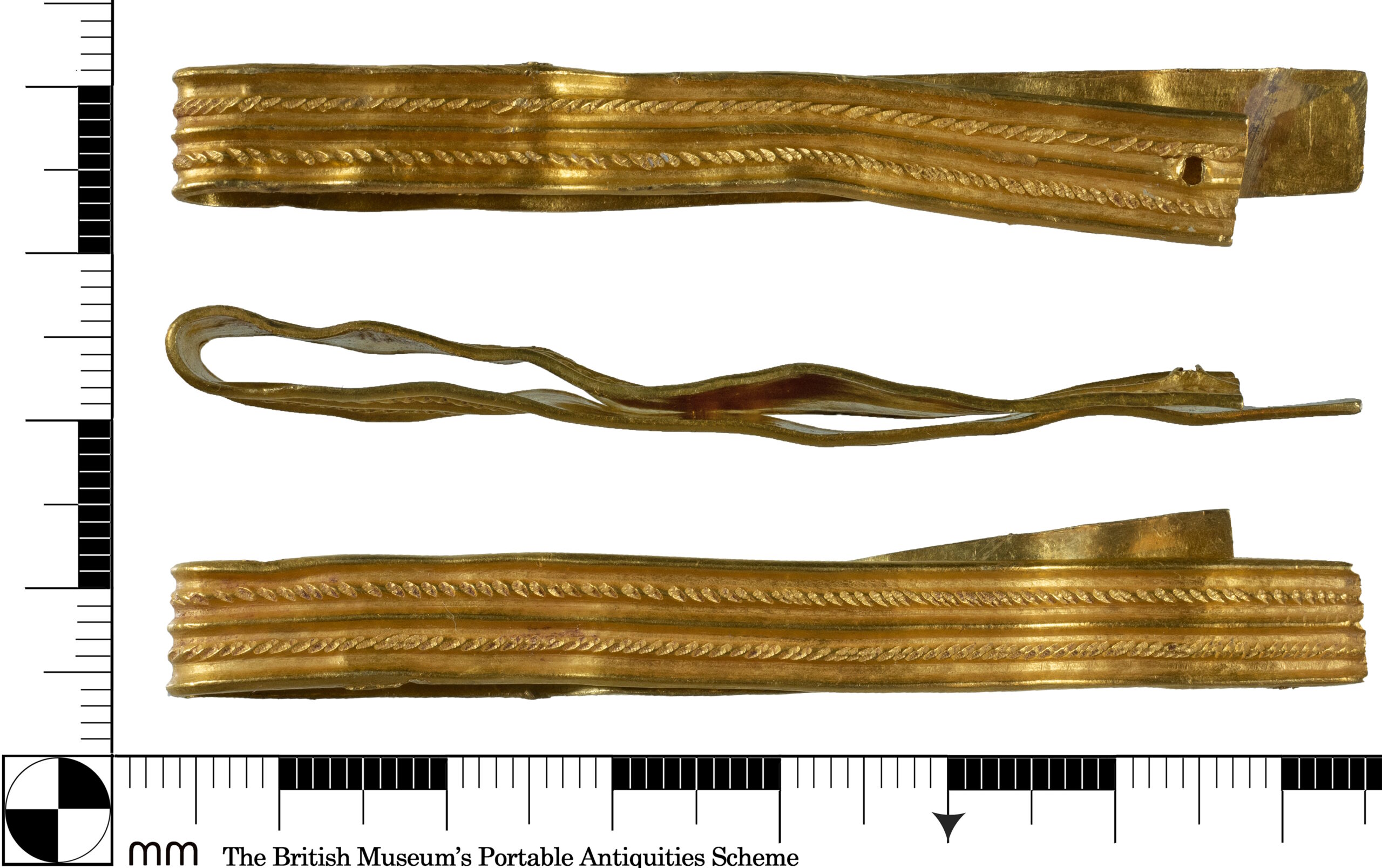 Excavations at the historic Altstadt Wettin Farmhouse in the center of Wettin, southeastern Germany, have unearthed a hoard of silver coins buried 350 years ago. Construction workers found the first coins when digging a trench for a new sewer line in July 2023, and archaeologists from Saxony-Anhalt’s State Office for Monument Preservation and Archaeology followed up with an excavation of the find site in the farmhouse’s courtyard. About 20 inches beneath the surface, 285 silver coins, greened by corrosion, were found compacted together. They were likely in an organic container that has rotted away. The hoard was removed in a soil block for micro-excavation under laboratory conditions.
Excavations at the historic Altstadt Wettin Farmhouse in the center of Wettin, southeastern Germany, have unearthed a hoard of silver coins buried 350 years ago. Construction workers found the first coins when digging a trench for a new sewer line in July 2023, and archaeologists from Saxony-Anhalt’s State Office for Monument Preservation and Archaeology followed up with an excavation of the find site in the farmhouse’s courtyard. About 20 inches beneath the surface, 285 silver coins, greened by corrosion, were found compacted together. They were likely in an organic container that has rotted away. The hoard was removed in a soil block for micro-excavation under laboratory conditions.
 The coins were exposed in layers, documented, cleaned and conserved. They were found to range in date from 1499 to 1652, and are an unusually international grouping. The majority are regional Saxon froschen coins, used for local markets, but the second largest number are thalers from the Spanish Netherlands, coins used for long-distance trade. There are also coins from Austria, the Netherlands, Switzerland, Italy and many German cities. Some of these are very rarely found in Wettin, for example a 1630 scudo minted by Odoardo Farnese, Duke of Parma and Piacenza, and a tallero minted in 1620 by Cosimo II de’ Medici when he was Grand Duke of Tuscany.
The coins were exposed in layers, documented, cleaned and conserved. They were found to range in date from 1499 to 1652, and are an unusually international grouping. The majority are regional Saxon froschen coins, used for local markets, but the second largest number are thalers from the Spanish Netherlands, coins used for long-distance trade. There are also coins from Austria, the Netherlands, Switzerland, Italy and many German cities. Some of these are very rarely found in Wettin, for example a 1630 scudo minted by Odoardo Farnese, Duke of Parma and Piacenza, and a tallero minted in 1620 by Cosimo II de’ Medici when he was Grand Duke of Tuscany.
 Archaeologists believe this was a collection amassed by a wealthy family active in international trade over 150 years and buried in the late 1650s. The two-story rectangular farmhouse was built in the second half of the 16th or the early 17th century by wealthy Wettin citizens. Records of ownership go back to the end of the Thirty Year’s War (1648). At the time when the coins were buried, the farmhouse belonged to Johann Dondorf, one of Wettin’s wealthiest people who would go on to become the town’s mayor in the late 1660s.
Archaeologists believe this was a collection amassed by a wealthy family active in international trade over 150 years and buried in the late 1650s. The two-story rectangular farmhouse was built in the second half of the 16th or the early 17th century by wealthy Wettin citizens. Records of ownership go back to the end of the Thirty Year’s War (1648). At the time when the coins were buried, the farmhouse belonged to Johann Dondorf, one of Wettin’s wealthiest people who would go on to become the town’s mayor in the late 1660s.
He earned his income primarily from agriculture, some wine-growing and brewing rights. Wettin was an extremely wealthy brewing town during and after the Thirty Years’ War. Dondorf’s wealth became clear after his death in 1675. When his estate was recorded by the court, more than 2,500 thalers were found in his house in 13 separate items, of which 1,000 thalers alone were “[…] 500 ducats in a long leather bag.”
Maybe this hoard was one of his leather bags full of cash he stashed all over his property.







